#marie van schuyler
Photo








Jennifer Saunders as Marie Van Schuyler and Dawn French as Miss Bowers in Agatha Christie's Death on the Nile (2022)
#death on the nile#dotnedit#filmedit#perioddramaedit#weloveperioddrama#onlyperioddramas#perioddramasource#hercule poirot#marie van schuyler#miss bowers#kenneth branagh#agatha christie#jennifer saunders#dawn french#mine
388 notes
·
View notes
Text
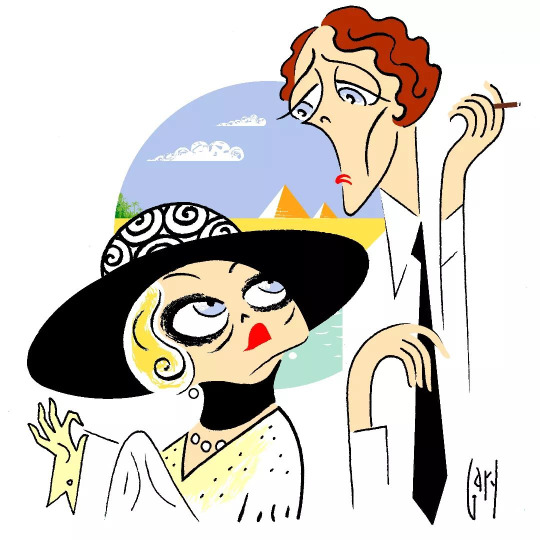
Bette Davis/Marie Van Schuyler and Maggie Smith/Miss Bowers
in Agatha Christie's Death on the Nile (1978)
by Gary Smith
Blackram Hall: The guy practically lives in a Clue board
#Bette Davis#Maggie Smith#Marie Van Schuyler#Miss Bowers#agatha christie#John Guillermin#death on the nile#gary smith#garycature#hercule poirot
41 notes
·
View notes
Text
Just girlie things!

This us? @curseconsumed, @annastrxng, @keptflame, @setauketloyalties, @pagetreader, @sharp-teeth-and-wide-grins, @anoseforrottenapples & @turnwashingtonsbaddies.
(This came up in my Pinterest and y’all were the first to come to mind. 🤷♀️ )
#muse: Eliza Schuyler-Hamilton#muse: Angelica Schuyler-church#muse: Mary Floyd Tallmadge#muse: Anna strong#muse: mary woodhull#muse: Abigail strong#muse: lola#muse: (oc) artémise van der veen#muse: (oc) sally the spy#muse: (oc) verity the spy#muse: (oc) Nancy the spy#aes / the lovers you take are dangerous#american revolution#18th century
6 notes
·
View notes
Text
Jennifer Saunders on Death on the Nile (2022)
as Marie van Schuyler on Death on the Nile
Information on beautifulfaces
Like or reblog.








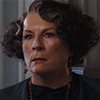
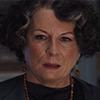






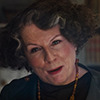











#Jennifer Saunders#icons: Jennifer Saunders#Jennifer Saunders icons#Jennifer Saunders as marie van schuyler#Jennifer Saunders on death on the nile#Jennifer Saunders death on the nile#death on the nile#icons
0 notes
Text
Elizabeth S. Hamilton at the Constitutional Convention, June 1797
Elizabeth Schuyler attended a diplomatic meeting at the age of 6; as a teenager, she hosted politicians solo; her relationship with George Washington predates Alexander Hamilton's. As a married adult, she stood in for Martha Washington, she led the Republican Court in NYC, she led charitable endeavors, and she hosted any number of national and international figures, from bankers to politicians, etc. U.S. presidents through the 1840s paid homage to her. But as so many women of the early Republic were, she was pretty deliberately erased. Particularly excised were the contributions and political activism of the Federalist wives - the amount of influence these women had could not be discussed.
And so by the late 20th century, we have historians writing that ESH didn't like politics and was sickly, usually pregnant, and often absent from her husband, but at least she tried to make a nice cozy environment for the Great Alexander Hamilton to go home and snuggle in, or something like that, as though it didn't occur to these historians that Elizabeth Schuyler likely could have married any number of wealthy, accomplished (and distant relative) men and lived a very comfortable life of luxury in Albany. And yet she looked at the super-charismatic guy who everyone said was brilliant, but with no steady income, not even a lawyer yet and with no ties to Albany, but noted as highly ambitious and said, "yep, he's the one!" Spoiler: she did it because she was ambitious herself and recognized that theirs could be a strong strategic/political partnership, in addition to a strong marriage. (I'm sure it was also good for her ego that he declared himself her best friend after only a few weeks and was so far gone he couldn't remember a military password after an evening with her.)
This erasure led to the common assumption that Elizabeth was not in Philadelphia at the Constitutional Convention in summer 1787. However, statutesandstories.com has posted about new evidence - really, a more careful examination and reading of old documents - that ESH was in Philadelphia in June 1797, and was likely in the city at the time of AH's June 18th speech to the convention. The theory is that she traveled with the Knoxes from NYC to Philadelphia, as she's mentioned in a letter from Knox that she is traveling with them, and she's definitely with AH on June 19th, as they are recorded in a journal/diary at a social engagement also attended by George Washington. Additional conjecture that this letter from AH can be more tightly dated to this period, considering these lines:
I cannot yet determine what will be our stay here and consequently I can make no determinations about my love; but I feel that it will be impossible for me to submit to a long separation however inconvenient it may be to incur the expence which will attend her coming here.
Which may align with EH borrowing money for this travel from her brother-in-law, Stephen van Rensselaer, also possibly more tightly dated to this period.
Please check out the well-cited posts (3 parts): 1, 2, and 3
Although no Hamilton biographers have discussed Eliza’s trip to the Convention in June, historians from Independence National Historic Park (INHP) concluded in the 1980s that Eliza was one of as many as nine wives who likely “attended” the Convention. Part 4 (pending) will discuss Eliza Hamilton’s relationship with the other eight wives who likely were in Philadelphia during the Convention, including Rufus King’s wife, Mary Alsop King, who was a native New Yorker.
This makes total sense to me - not just the documentation presented, but that she would have shown up to perform soft politicking/diplomacy around her husband's activities, in addition to a possible role assisting him in the drafting and editing of his speech. The daughter of Philip Schuyler and Catharine Van Rensselaer wasn't going to sit in NYC on the sidelines for this - she bolstered Hamilton not only in the ways she was personally helpful to him (emotionally, but also going over his writings and speeches with him), but through her representation of the wealthy Dutch-American interests, showing that Hamilton was a junior delegate from NY with a lot of political and financial power backing him.
As the blog states:
Yet it remains possible that Eliza may have helped her husband prepare for his one-of-a-kind speech on June 18. Moreover, it is felt that the possibility of informal, behind-the-scenes contributions by Eliza cries out for further examination.
Cause ya know, she's not discussing new threads for her needlework and thoughts on child-weaning at all these social gatherings or standing in for Martha Washington and chatting with Martha's husband about the best ways to make pastry.
And I just love if she helped advise him on a speech that only the "rich and well-born" can make a strong government. I'm sure they felt quite haughty and proud and said, "let's make another baby!" (James Alexander Hamilton was born around 9 months later.)
13 notes
·
View notes
Text

“John Bradstreet, the eldest son, to whom the estate of Saratoga was given, had married Elizabeth Van Rensselaer, the sister of the Patroon Stephen, the husband of Margaret Schuyler. His married life was brief. He died a few years after, leaving a boy, Philip, to be the representative of the name. This boy was sent to the Hamiltons', and with young Cortland Schuyler and the Hamilton boys went to Bishop Moore's school for boys on Staten Island, returning to New York Friday even- ings to spend Sundays with the Hamiltons.”
(source — Catherine Schuyler, by Mary Gay Humphreys Pg. 229)
Bradstreet died in the August of 1795, which was the same year Lafayette's son, Georges Washington Louis Gilbert de La Fayette, lived with the Hamilton's for a few months. Not to mention Frances Antill, an orphan from Hamilton's old war friend, was also still living with the Hamilton's.
So, you're telling me; Elizabeth and Hamilton were wrangling around from Philadelphia, to Albany, and New York with ten kids?
#No wonder Elizabeth started a damn orphanage later in life#Need some one to take care of your kid? Give them to the Hamilton's!#amrev#american history#american revolution#alexander hamilton#historical alexander hamilton#elizabeth schuyler hamilton#elizabeth hamilton#John Bradstreet Schuyler#frances antill tappan#frances antill#Philip Bradstreet Schuyler#georges washington de lafayette#hamilchildren#history#hamilton family#hamilton kids#hamilton children#hamilkids#Cicero's history lessons
57 notes
·
View notes
Text
Today the church remembers the Martyrs of Memphis, Sr. Constance, Nun, and Her Companions.
Orate pro nobis.
Late in the summer of AD 1878, yellow fever struck Memphis, Tennessee. The populace all tried to flee, leaving behind those unable to escape, mostly the poor and those already ill. Within 10 days of the first yellow fever death in Memphis, more than half the population fled the city in a panic. They left “by every possible conveyance — by hacks, carriages, buggies, wagons, furniture vans, and street drays,” wrote Keating. “By anything that could float on the river, and by the railroads. The stream of passengers seemed endless, and they seemed to be as mad as they were many.”
Left behind were still some 20,000 men, women, and children, but Memphis faded into a ghost town. Shops and offices were boarded up, houses locked and shuttered. An eerie silence smothered the city, broken only by the occasional booming of cannons (fired to break up the “poisons” in the air), and the steady clop-clop of doctors’ wagons or carts hauling caskets. At night, smoldering fires of burning bedding and clothing — the last belongings of fever victims — lit the yellow-armbanded Howard Association members, who scurried from house to house aiding the sick.
Victims dropped dead in the streets, and bodies were discovered each morning in the city’s parks. Entries in the sister’s journals describe an abandoned town with the bodies of the dead lying where the fell, children in homes with their dead parents…scenes of pure horror. Sister Constance wrote: “Yesterday I found two young girls, who had spent two days in a two-room cottage with the unburied bodies of their parents, their uncle in the utmost suffering and delirium, and no one near them. It was twenty-four hours before I could get those fearful corpses buried, and then I had to send for a police officer … before any undertaker would enter that room.”
The Episcopal Cathedral of St. Mary’s, and its adjacent Church Home, were in the poor part of town, the center of the most infected area, and became shelters for victims. The cathedral staff and nuns of the Sisters of St. Mary, who operated the Church Home, faced enormous burdens in caring for the sick and dying. The Cathedral of St. Mary, then a plain wooden church, stood as a beacon of hope amid the gloom, and two priests there — Fr. Charles Parsons and Fr. Louis Schuyler — also played heroic roles during the epidemic. They joined dozens of other church members throughout the city who, along with the Howard Association, died at their posts during the ordeal.
Some of the sisters were on retreat in Peekskill, New York, when the epidemic broke out, and instead of keeping a safe distance they rushed back to Memphis. When the news of the deaths of the local priests got out, over 30 priests from all over the nation volunteered to come to Memphis. Father W.T. Dickinson Dalzell came from Shreveport, La., since he had already survived the disease and was immune—he was also a trained physician. With his arrival, daily Eucharist resumed and the Sacrament was carried to the dying Sisters.
Sister Constance was the first of the nuns to be stricken. As she died on September 9, her last words were “Alleluia, Hosanna,” simple words of praise remembered and inscribed on the cathedral"s high altar.
Sister Constance’s companions in service to the sick and dying, Sisters Thecla and Ruth, soon followed her to the grave, as did Sister Frances, headmistress of the Church Home. She had nursed some thirty children at one time and had watched twenty-two die. Fr. Louis Schuyler, a chaplain to the Sisters of St. Mary, also died of the fever, as did Fr. Charles Parsons. Fr. Parsons was blessed with a vision of heaven as he lay dying and his last words were, “Lord Jesus, receive my spirit.”
When winter came and the mosquitoes died off, the epidemic ended, 200 towns and cities across the South lay wasted. Yellow fever had infected more than 100,000 people, causing some 20,000 deaths — more than 5,000 in Memphis alone.
5,150 people died in the Memphis Yellow Fever epidemic of 1878, and many of them were formerly healthy people who had stayed to help the sick until succumbing themselves. The city buried 1,500 of its dead in a mass grave on a bluff overlooking the Mississippi -- and pretty much forgot about them until January 3, 1971, when the grave site became Martyrs Park.
On this day we honor those who gladly risked their own lives in the name of Jesus in order to save the lives of many and to assuage the final suffering of others.
Embolden us to work for the healing of all those in need, seeking to love others as you have loved us, Lord Christ.
We give you thanks and praise, O God of compassion, for the heroic witness of Constance and her companions, who, in a time of plague and pestilence, were steadfast in their care for the sick and dying, and loved not their own lives, even unto death; Insipre in us a like love and commitment to those in need, following the example of our Savior Jesus Christ; who with you and the Holy Spirit lives and reigns, one God, now and for ever.
Amen.

2 notes
·
View notes
Photo

Jennifer Saunders
Facts
July 6, 1958
English actress
Filmography
Marie Van Schuyler [Death on the Nile: 2022]
Heidi [The Stranger: 2020]
Natalie’s Mom [Isn't It Romantic: 2019]
Judith [Josh: 2015-2017]
Edina [Absolutely Fabulous: The Movie: 2016]
Edina [Absolutely Fabulous: 1992-2012]
Colombine [Let Them Eat Cake: 1999]
Jennifer [The Comic Strip: 1981]
Appearance
blonde
blue eyes
1.63m
Roleplay
playable: young adult, adult
Icons: Death on the Nile
#Jennifer Saunders#fem 50s#fem english#50s fem english#death on the nile#the strangler#isn't it romantic#josh#absolutley fabulous: the movie#absolutley fabulous#let them eat cake#the comic strip#blonde fem young#blonde fem adult#50s fem blonde#blue eyes fem young#blue eyes fem adult#50s fem blue eyes#young adult female#adult female
3 notes
·
View notes
Text
Upcoming Cannon Hall Exhibition - Costume from the Classics

Cannon Hall is hosting an exhibition from the 24th May to 15th September 20204. The Exhibition is part of the Barnsley Museums 2024 Exhibition Program, and is inspired by John Spencer's Library at Cannon Hall. Displayed around the South Front and rooms of the estate, there will be ten costumes from CosProp, one of the UK's major costume makers, each costume created for the film adaptions of classic novels. The award winning film adaptations include:
Far From the Madding Crowd (2015) - Costume Designer: Janet Patterson - Character: Bathsheba Everdine played by Carey Mulligan
Little Women (2019) - Costume Designer: Jaqueline Durran - Character: John Brooke played by James Norton
Death on the Nile (1978) - Costume Designer: Anthony Powell - Character: Marie Van Schuyler played by Bette Davis
Murder on the Orient Express (1974) - Costume Designer: Alexandra Byrne - Character: Hercule Proirot played by David Suchet
Dangerous Liaisons (1988) - Costume Designer: James Acheson - Character: Madame de Volanges played by Swoosie Kurtz
The Duchess (2008) - Costume Designer: Michael O'Connor - Character: Georgiana -Duchess of Devonshire played by Kiera Knightly
Queen Charlotte: A Bridgerton Story (2023 Netflix) - Costume Designers: Lyn Paolo, Laura Frecon, Jovana Gospavic, and Alex Locke - Character: Young Agatha Danbury played by Arsema Thomas
Tulip Fever (2017) - Costume Designer: Michael O'Connor - Character: Sophia Sandvoort played by Alicia Vikander
The Danish Girl (2015) - Costume Designer: Paco Delgado - Character(s): Einar Wegener and Lili Elbe played by Eddie Redmayne
0 notes
Text
Film Review - Death On The Nile (2022)
Having looked into a number of older films in working through my current film review backlog, I’m now going to start working in cinema releases from the past couple of years. We begin this trend by checking out Ken Branagh’s second foray into the world of Hercule Poirot, as I take a look at the 2022 version of Death on the Nile…
Plot (as adapted from Wikipedia):
In 1914, Hercule Poirot is a soldier on the western front. He gives a suggestion to his commanding officer that enables them to push back German forces from a bridge they’ve been ordered to secure. Unfortunately, the bridge is booby-trapped; Poirot’s CO is killed in the explosion and Poirot sustains severe facial injuries. His lover Katherine, who is also his nurse, suggests he grow a moustache to conceal the scars. She is killed later in the war.
In 1937 at a London club, Poirot watches blues singer Salome Otterbourne perform. He notices Jacqueline "Jackie" de Bellefort introducing her fiancé Simon Doyle to her childhood friend, heiress Linnet Ridgeway. After meeting Simon, Linnet agrees to hire him as her land agent.
Six weeks later, Poirot encounters his friend Bouc and his mother, Euphemia, in Egypt, and the trio attend the wedding of Linnet and Simon. Others join their honeymoon trip: Linnet's maid, Louise Bourget; Salome and her niece/manager, Rosalie, Linnet's schoolfriend; Linnet's godmother, Marie Van Schuyler with her nurse, Mrs. Bowers; Linnet's financial manager and cousin, Andrew Katchadourian; and Dr Linus Windlesham, Linnet's former fiancé who renounced his wealthy background. Linnet asks Poirot for protection from the obsessive and bitter Jackie, who has stalked the couple to Egypt, angry at Linnet for stealing Simon away from her.
To escape Jackie, the group boards the cruise ship S.S. Karnak, but Linnet tells Poirot she distrusts her guests. Bouc reveals he is dating Rosalie, despite his mother's disapproval; Poirot finds himself attracted to Salome. After a boulder falls off a column and nearly crushes Linnet and Simon, the guests return to the Karnak to discover Jackie has boarded. Linnet goes to bed and Simon confronts Jackie, who shoots him in the leg. When she attempts to shoot herself, Rosalie and Bouc intervene. They take Jackie to Mrs. Bowers, while Windlesham arrives to treat Simon. The following morning, Louise discovers Linnet has been fatally shot in the head. Linnet's valuable necklace has also been stolen. Poirot, assisted by Simon and Bouc, interrogates the guests, each of whom bears a grudge against Linnet or would benefit from her death.
Poirot reveals that Euphemia hired him to investigate Rosalie, who, he concludes, is more than worthy of her son's affection. Rosalie, angry at being investigated, storms off and discovers Louise's body with money. Poirot suspects Louise witnessed Linnet's murder and blackmailed the killer. Interrogating Bouc with Simon, Poirot deduces that Bouc found Linnet dead and stole her necklace to gain financial freedom from his mother but panicked and put it in Euphemia's belongings. Bouc witnessed Louise's murder, but before revealing the killer, he is shot through the throat and is killed; Poirot chases the killer, but only finds the abandoned gun.
Locking the surviving guests in the boat's saloon, Poirot reveals that Simon killed Linnet, with Jackie as the mastermind. They are still lovers and arranged Simon's romance with Linnet to inherit her wealth. Simon drugged Poirot's champagne and Jackie pretended to shoot a blank at Simon who faked his injury with paint stolen from Euphemia. While Jackie distracted Bouc and Rosalie, Simon killed Linnet and, returning to the saloon, shot his own leg, muffled by Van Schuyler's scarf. Jackie killed Louise with Windlesham's scalpel, and Bouc with Andrew's gun. As a final clue, Poirot reveals that the handkerchief used in the fake shooting, recovered along with the gun, had been faded to pink instead of brown, proving the stains were not from blood. Faced with Poirot's irrefutable proof, Jackie embraces Simon and shoots him through the back, killing them both with one shot. As the passengers disembark, Poirot is unable to voice his feelings to Salome.
Six months later, Poirot is now clean-shaven and visits Salome's club to watch her rehearse.
Review:
To date, Branagh has directed and stared in three Poirot films, beginning with 2017’s Murder on the Orient Express, while A Haunting in Venice was released last year in 2023. This middle instalment was originally slated for a 2019 release, moved back to 2020 for production reasons, and then hit multiple delays due to the Covid-19 pandemic, eventually gaining theatrical release in February 2022. Across all three films, two aspects are evident; one is a former love interest of Poirot’s that appears to be unique to this film series, and the other is a progressive deviation from the source material that will doubtless delight critics and irritate the hell out of the purists among the novel fans.
As someone who has at least listened to an audio drama based on the novel version of this story, the deviations quickly stand out, and to be honest, I’m not sure all of them are needed. Some feel like strictly Hollywood contrivances, added solely to please producers who may be paying more attention to audience surveys than the material being dealt with. Others are perhaps compelled by an inherent need to distance the film from past adaptations, and yes, there has been more than one adaptation before this one. While US audiences may only know the film versions, the British TV channel ITV had a TV series of feature-length Poirot adaptations featuring David Suchet as Poirot, so there’s at least two adaptations of the story by British standards.
While the film succeeds in being different to its predecessors, some aspects of it may not be to everyone’s tastes. More specifically, the highly sexualised behaviour of Jackie and Linnett, played by Emma Mackey (Netflix’s Sex Education) and Gal Gadot (Wonder Woman) seems at odds with the kind of behaviour that would be acceptable at the time the story is set. Nonetheless, the two women and Branagh are joined by a relatively all-star cast in delivering great performances, which largely compensate for deviations from the source material and a little too much Hollywood in a Christie crime story for all tastes.
Overall, this version of Death on the Nile is a decent film, but perhaps not everyone’s cup of tea. One final positive to its credit is that, like its predecessor, the main transport conveyance seen in the film is a giant stage-set, giving an incredible environment that matches the quality acting. On balance, I’d give this film 8 out of 10.
0 notes
Photo
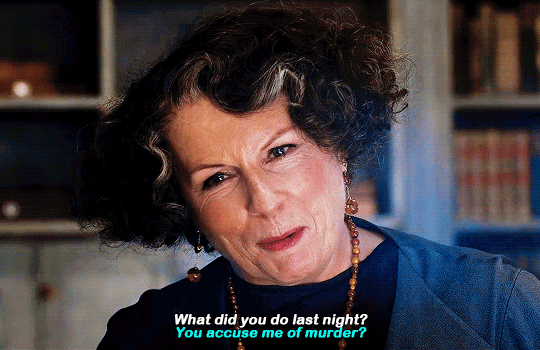



You must meet Hercule Poirot! He’s only the greatest detective alive.
Death on the Nile (2022), dir. Kenneth Branagh
#death on the nile#poirot#hercule poirot#kenneth branagh#dawn french#jennifer saunders#filmedit#tvandfilm#fyeahmovies#chewieblog#bbelcher#tom bateman#deathonthenileedit#*edit#poirot has the coolest comebacks#and bouc knows him well to say#'oh no he's always like this' :D#i love the dramatic sound the trailer makes#when marie van schuyler says 'murder' :)
381 notes
·
View notes
Text





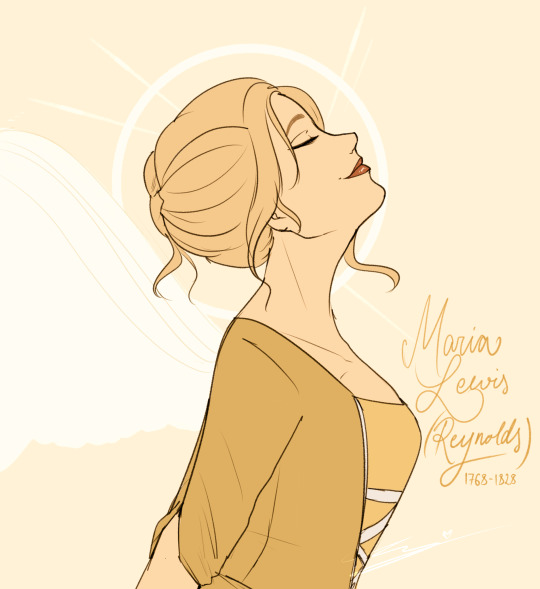



Happy belated Mother's day 💛 Here are some Hamilton ladies that were mothers :)
#historical hamilton#catherine van rensselaer schuyler#rachel faucette buck#rachel faucette#angelica schuyler church#elizabeth schuyler hamilton#eliza schuyler hamilton#margarita schuyler van rensselaer#peggy schuyler van rensselaer#maria lewis#maria reynolds#mary morris hamilton#maria eliza van den heuvel hamilton#rebecca mclane hamilton
281 notes
·
View notes
Text
CHARACTER QUESTIONNAIRE !!
Tagged by: myself.
Tagging: you!
✧・゚ 𝐃𝐀𝐒𝐇 𝐆𝐀𝐌𝐄.
► ARTÉMISE VAN DER VEEN.

Name: Artémise “Artemis” Van Der Veen.
Alias(es): Marquess (in theory, through Dutch family and money and in the way she presents herself). To the revolution! violinist, spy for the culper ring, anti monarchist, “roaster of lobsters” (red coats).
Gender: female (she/her).
Orientation: bi (male lean). But married to the revolution until it’s over and her less fortunate darker siblings are free of the vile disease known as enslavement.
Age: 24-26
Date of birth: December 20th.
Place of birth: New Orleans, Louisiana but New York is her chosen home.
Spoken language(s): Haitian Creole, French, Dutch, English, German and Spanish.
Occupation(s): violinist, old Dutch money, socialite. spy and revolutionary.
★ ⸻ APPEARANCE
Eye colour: brown.
Hair colour: black.
Height: 5’4”
Other: won’t be caught dead not wearing a hat or bonnet, usually deceivingly innocent looking, has a dark side, at least, aesthetically.
★ ⸻ FAVORITE
Colour: aqua.
Song: C’est L’autre Cancan (creole song) - literally translated: “don’t give up the ship.”
The world turned upside down amuses her, but it’s a battlefield march.
Food: gumbo or cake.
Drink: champagne.

★ ⸻ HAVE THEY...
Passed university: her mother was insistent about it.
Had sex: not your concern. (Yes).
Had sex in public: no.
Gotten pregnant/someone else pregnant: the Virgin Mary was a none white lass, like myself, so was Mary Magdalene, well, all of the Good God’s original people were notably not white, just like my siblings in chains. But no, that’d be a scandal one seldom recovers from.
Kissed a boy: yes.
Kissed a girl: yes.
Gotten tattoos: no.
Gotten piercings: yes, ears.
Been in love: with the ideals of revolution.
Stayed up 24+ hours: thankfully no, but if it’s necessary for the cause, she’ll act as required.
★ ⸻ ARE THEY...
A virgin: not your concern. (No).
A cuddler: yes.
A kisser: circumstantially.
Scared easily: no.
Jealous easily: she doesn’t wish to find out.
Submissive: emotionally, when it’s of use to her and the cause.
Dominant: on the violin and with a pen.
In love: with the revolution and liberty. The revolution and lady liberty is her betrothed. 😤
Relationship status: thread/universe dependent.


★ ⸻ RANDOM QUESTIONS
TW for self-harm/suicide mention.
Have they harmed themselves: that’s blasphemy, and no.
Thought of suicide/ideated: once, as a teenager, may the good God, saints and Iwa forgive her.
Attempted suicide: no.
Wanted to kill someone: she could give a list… Simcoe is shockingly not on it, not yet, in any case.
1. King George III
2. General William Howe, 5th viscount Howe, English general and Tory responsible for the occupation of her dearest New York City.
3. Major Edmund Hewlett.
4. Thomas Jefferson. (Yes she knows in fighting is bad).
5. Robert Rogers, Benedict Arnold, Charles Lee.
6. John André. (She respects this one, but she doesn’t like him).
Have/had a job: spying for the culper ring.
Being an only daughter is a job in and of itself, thank you.
Fears: losing the war, slavery, hatred, ignorance, betrayal, bigotry, violence, hate and loathing that drives people like the English to commit violence in America. Sibling(s): an only child, but she supposes Benjamin Tallmadge and her fellow ring members count as siblings. Some of them need to be in loco parentis. 🤷♀️ (Ahem: Abraham).
Parent(s): Marcelle André Van Der Veen - creole/Dutch businessman from just outside the French city of NOLA/Adriaan “Ad” Van der Veen (née De Vries)- French/Welsh/Dutch old money based in upstate New York, family, like the Schuyler’s Dutch well-to-do family from the Netherlands who settled New York in the year 1624.
Children: Sprout counts as an adopted nephew!
Pet(s): a beagle and a Yorkshire terrier.
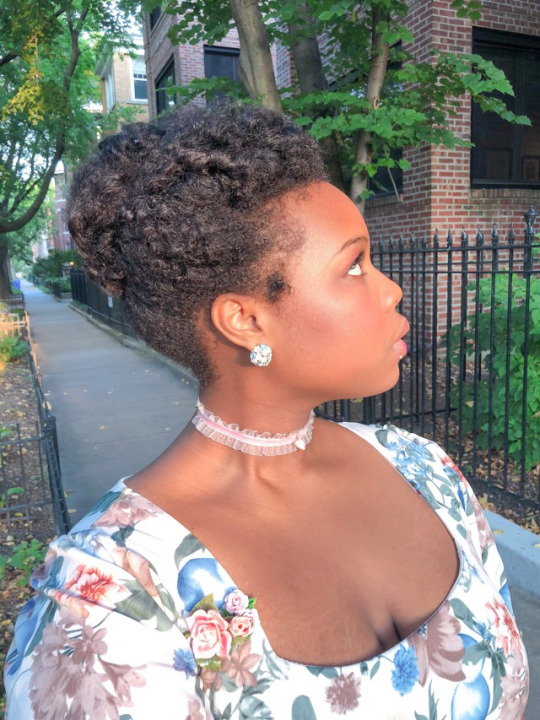
Face claim.
Face claim.
Dutch & NYC.
Black nobility - 18th century.
#muse: (oc) artémise van der veen#about / to confide or confess#visage / merely aiding nature#style / it’s beyond my control#historical verse.#history#historical references#meta
1 note
·
View note
Text

they’re bffs..... Polly Laurens & Peggy Schuyler !
(this is semi-old as well !)
#mary eleanor laurens pinckney#margarita peggy schuyler van rensselaer#hamilton: an american musical#john laurens#artists on tumblr#mir.art
48 notes
·
View notes
Text
Schuyler elopements
The following accounts are from Women of Colonial and Revolutionary Times: Catherine Schuyler (1897) by Mary Gay Humphreys.
Regarding the elopement of Angelica Schuyler and John Church:
“Carter and my eldest daughter ran off and were married on the twenty-third of July. Unacquainted with his family connections and situation in life the matter was exceedingly disagreeable and I signified it to them” [Philip Schuyler to William Duer, pg 191]
[One can read my speculation about why, (x), considering the above, AH was nevertheless acceptable to the Schuylers]
Regarding the elopement (that I don’t think was an elopement, just a surprising marriage due to SVR’s youth) of Margarita (Peggy) Schuyler and Stephen Van Rensselaer:
“Stephen’s precipitate marriage has been to me a source of surprise and indeed of regret. He certainly is too young to enter into a connection of this kind; the period of his life is an important crisis; it is the time to acquire Fame, or at least to prepare for its acquisition. It is the Time to engage in a busy life, to arouse the Facultys into action, to awake from a lithargic Inattention, which is generally the consequence of youthful pleasures, and make a figure upon the active Theatre. Instead of this our field has indulged the momentary impulse of youthful Passions, and has yielded to the dictates of Remorseful Fancy.” [Harrison Gray Otis to Killian Van Rensselaer, pg 195]
Regarding the elopement of Cornelia Schuyler and Washington Morton:
At the Morton home in New Jersey there had been a notable wedding, that of Eliza Morton to Josiah Quincy of Boston. The Rev. Samuel Smith of Princton College performed the ceremony before all the aristocracy of the time....Among the guests was Miss Cornelia Schuyler. The bride had a brother, Washington Morton. He made himself prominent as a lad during the British occupation by losing a darning needle which, being the only one in the neighborhood, accordingly had to be loaned from house to house. He was now one of the young bloods of the time. One of his recent enterprises had been a walk to Philadelphia on a wager. He was accompanied by various young men on horseback and in carriages. That night he gave them a dinner at Philadelphia, and was one of the liveliest of the company. He was of superb figure and very athletic. The admiration of Miss Schuyler and Mr. Morton was mutual and prompt. He followed the young lady to Albany and declared his attentions to her father. His walk had given him much distinction, but it was not the sort likely to win the approval of so strict a disciplinarian as General Schuyler, or the championship of so considerate a mother as his wife.
The young man’s suit was refused. “He has not taken that place which befitted a married man,” and the General, to make sure of his position, led the young man to the wharf and saw him aboard the New York sloop. Returning home he called his daughter into the library and told her what he had done. “My wishes will be respected? Promise me to have nothing to do with him by word or letter.”
“I cannot.”
“What! do you mean to disobey me?”
“I mean I cannot bind myself; I will not.”
The issue was made. What steps were taken to secure obedience do not appear. In time, however, the impatient lover found opportunity to send his love a letter, and one moonlit evening two muffled figures appeared under Miss Cornelia’s window. At a low whistle the window opened and a rope was thrown up. Attached to the rope was a rope ladder, which making fast like a veritable heroine of romance the bride descended. They were driven to the river, where a boat was waiting to take them across. On the other side was the coach-and-pair. They were then driven thirty miles across country to Stockbridge, where an old friend of the Morton family lived. It was Judge Theodore Sedgwick, not unknown to General Schuyler in Congress and about the troublesome boundary commissions. The affair had gone too far. The judge sent for a neighboring minister and the runaways were duly married. So flagrant a breach of the parental authority was not to be hastily forgotten. Philip and Catherine Schuyler had had had various experiences in kind, but this transcended everything out of fiction, from which in fact it seems to have been carefully copied. It was some months before the young couple was pardoned, by the stern father at least, for the mother’s heart quickly responded to the happiness of her children, even though they had been so willful. As in the case of the other runaways, the youthful Mortons disappointed expectation, by becoming important householders and taking a prominent place in the social life of New York, where Washington Morion achieved some distinction at the bar. [pg 202-4].
A few posts about Washington Morton, x
#Washington Morton#Cornelia Schuyler Morton#Philip Schuyler#Catharine Van Rensselaer Schuyler#Angelica Schuyler Church#John B. Church#Margarita Schuyler Van Rensselaer#Stephen Van Rensselaer
2 notes
·
View notes
Note
I heard that the Hamiltons adopted 3 kids but the only one that I know of is Fanny Antill. Is this true? If so, who were the 2 other kids? Thank you and have a good day.
I believe I said they cared for three, but I can understand the mix-up — so, I apologize, I should have specified. The Hamilton's did only actually adopt Fanny Antill, but they temporarily took in two others, which were; John Bradstreet Schuyler's son, Philip B. Schuyler, and Marquis de La Fayette's son, Georges Washington de La Fayette.
John Bradstreet died on the 19th of August, 1795. And the Hamilton's took in his son for an unspecified period of time shortly after;
“John Bradstreet, the eldest son, to whom the estate of Saratoga was given, had married Elizabeth Van Rensselaer, the sister of the Patroon Stephen, the husband of Margaret Schuyler. His married life was brief. He died a few years after, leaving a boy, Philip, to be the representative of the name. This boy was sent to the Hamiltons', and with young Cortland Schuyler and the Hamilton boys went to Bishop Moore's school for boys on Staten Island, returning to New York Friday even- ings to spend Sundays with the Hamiltons.”
(source — Catherine Schuyler, by Mary Gay Humphreys)
In 1795, James Monroe convinced the Lafayette's to send their son to the United States so he would would steer clear of the dangerous conflict brewing in France. Georges was originally supposed to reside with Washington, but due to the tension in America over the actions of French privateers against American cargo ships heading to Britain; Washington was trying to remain neutral, and taking in Lafayette's son would have been seen as controversial. So, instead Hamilton took care of Georges until the conflict would die down enough for Washington to safely take him in;
“The young Fayette also appears to me very advantageously, modest, of very good manners, and expressing himself with intelligence and propriety.
Shall I trespass on your indulgence in hazarding a sentiment upon the subject of this young Gentleman? If I do let it be ascribed to the double interest I take in a son of the Marquis and in whatever interests the good fame and satisfaction of him to whom I write.”
(source — Alexander Hamilton to George Washington, [October 16, 1795])
#amrev#american history#alexander hamilton#historical alexander hamilton#georges washington de lafayette#john bradstreet schuyler#philip bradstreet schuyler#history#queries#sincerely anonymous#Cicero's history lessons
29 notes
·
View notes